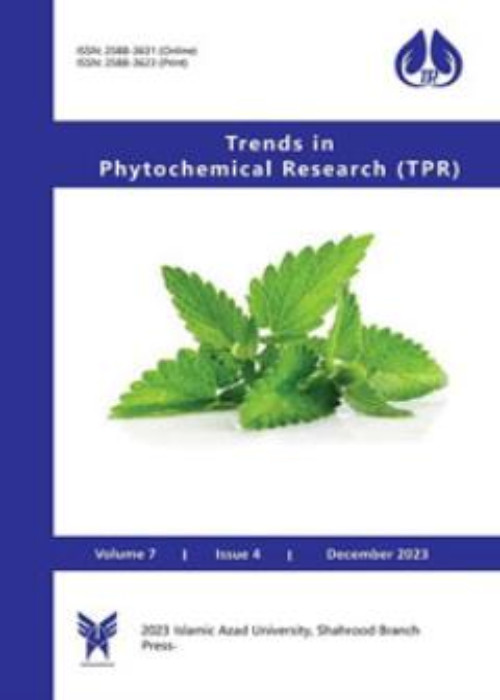Understanding the phytochemical constitution, antioxidant potential and spectral characteristics of aqueous extracts of the chosen leafy vegetables from south India
Author(s):
Article Type:
Research/Original Article (بدون رتبه معتبر)
Abstract:
The phytochemical composition, total phenolic and ascorbic acid contents of the aqueous extracts of six south Indian leafy vegetables viz. Amaranthus viridis L, Hibiscus cannabinus L, Spinacea oleracea L, Mentha spicata L, Murraya koenigii L and Coriandrum sativum L were tested, characterized and the antioxidant potential evaluated. Also, aqueous leaf extracts of A. viridis and H. cannabinus were demonstrated for their ability to form silver nanoparticles. All the aqueous extracts demonstrated the presence of flavonoids, saponins, tannins (except M. koenigii) and terpenoids (except S. oleracea) while phlobatannins (only in M. spicata), steroids, cardiac glycosides, alkaloids and proteins were absent in all the leaves tested. Carbohydrates were found only in the aqueous extract of H. cannabinus. The total phenolic content was the order of 0.9, 0.2, 1.8, 0.8 and 2.1 mgGAE/g of the leaves for A. viridis, H. cannabinus, M. spicata, M. koenigii and C. sativum respectively while S. oleracea did not respond to total phenolic content assay by FC method. Ascorbic acid, present in all the leafy vegetables with the lowest value of 0.3 mg/g in M. spicata and highest value of 1.9 mg/g in C. sativum. A highly significant DPPH radical scavenging activity was found in H. cannabinus (82.76%) followed by M. spicata (78.08%) and C. sativum (69.76%) at an extract concentration of 31.25 mg/ml while A. viridis, S. oleracea and M. koenigii showed 72.95%, 58.27% and 75.38% respectively at a concentration of 50 mg/ml. FT-IR spectral characterization of the extracts and the synthesized silver nanoparticles (Ag NPs) indicated the presence of N-H amines, O-H stretch, C-H out of plane bending vibrations, C=C stretching of alkenes, C=O stretch of amide and C≡C stretch of alkynes. The leafy vegetables can be used for the synthesis of lead compounds which will cure diseases.
Keywords:
Language:
English
Published:
Trends in Phytochemical Research, Volume:2 Issue: 2, Spring 2018
Pages:
111 to 118
magiran.com/p2067350
دانلود و مطالعه متن این مقاله با یکی از روشهای زیر امکان پذیر است:
اشتراک شخصی
با عضویت و پرداخت آنلاین حق اشتراک یکساله به مبلغ 1,390,000ريال میتوانید 70 عنوان مطلب دانلود کنید!
اشتراک سازمانی
به کتابخانه دانشگاه یا محل کار خود پیشنهاد کنید تا اشتراک سازمانی این پایگاه را برای دسترسی نامحدود همه کاربران به متن مطالب تهیه نمایند!
توجه!
- حق عضویت دریافتی صرف حمایت از نشریات عضو و نگهداری، تکمیل و توسعه مگیران میشود.
- پرداخت حق اشتراک و دانلود مقالات اجازه بازنشر آن در سایر رسانههای چاپی و دیجیتال را به کاربر نمیدهد.
دسترسی سراسری کاربران دانشگاه پیام نور!
اعضای هیئت علمی و دانشجویان دانشگاه پیام نور در سراسر کشور، در صورت ثبت نام با ایمیل دانشگاهی، تا پایان فروردین ماه 1403 به مقالات سایت دسترسی خواهند داشت!
In order to view content subscription is required
Personal subscription
Subscribe magiran.com for 70 € euros via PayPal and download 70 articles during a year.
Organization subscription
Please contact us to subscribe your university or library for unlimited access!


